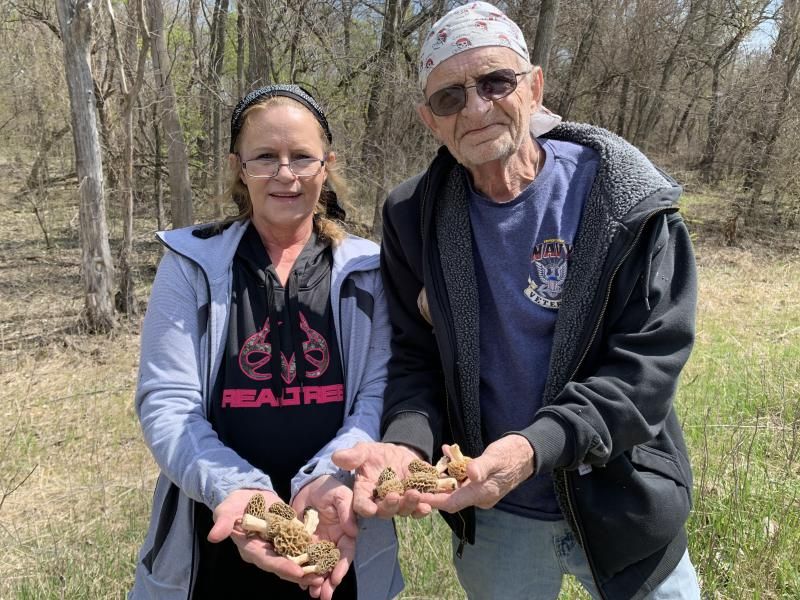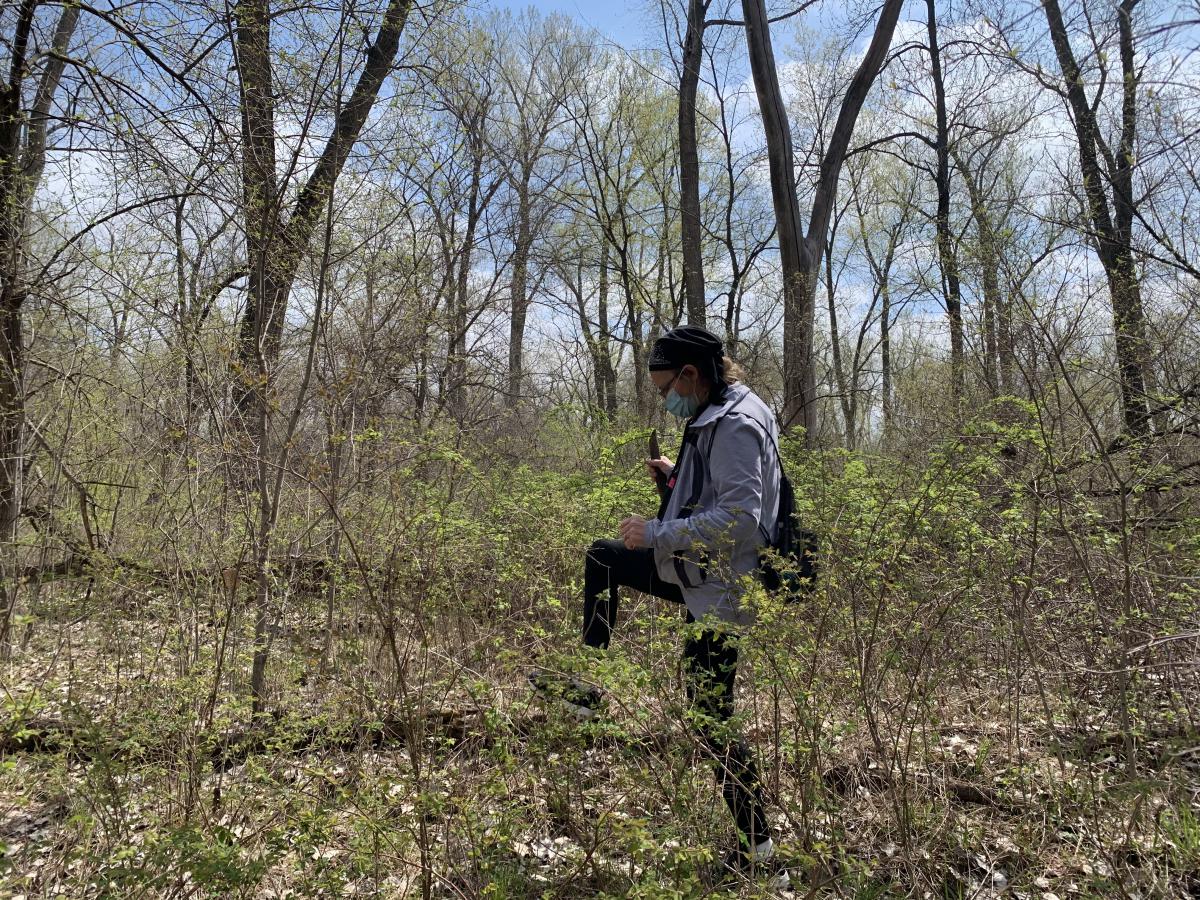
Wendy Porter and her father Roger Jensen show off the morel mushrooms they found in the woods. (MELISSA ROSALES / NET)
Every spring, people scour river bottoms, searching for edible morel mushrooms. For many mushroom hunters, finding the hollow, sponge-like mushrooms is as much a draw as their earthy flavor.
The start of the season
Wendy Porter is hunting morel mushrooms with her father near the Missouri River. The 51-year-old Nebraskan has been hunting them for three decades. She even started a Facebook group for morel mushroom hunting in Nebraska in 2018.
“To my surprise, people were wanting to join left and right, and I mean, daily, I get probably 20, 25 people wanting to join. That's pretty cool,” she says.
The group now has more than 2,500 members.

Porter’s father, Roger Jensen, is from Council Bluffs, Iowa. Two knee replacements and a shoulder replacement didn’t stop the 70-year-old from hunting with his daughter multiple times a week. Sometimes his granddaughter and great-grandkids come along.
“Yeah, it's kind of a family deal with us,” he says.
Omaha Public School Teacher Kristi Jones of Omaha knows what that’s like.
She grew up hunting morel mushrooms with her father, Phill Finch. Every year, they went hunting together until he fell ill with COVID-19 and had a heart attack.
“He passed February 24,” she says. “So the last time we actually got to mushroom hunt together was last spring.”
The hunt
Morel hunting expert Tersh Kepler describes the activity as an adult treasure hunt.
“The one thing a morel hunter will never do is tell people exactly where they're going,” he says.
Hunters are worried about people finding their secret spot and getting their mushrooms. Morels are hard to find because they require very specific conditions to grow. The ground temperatures need to be between 55 and 60 degrees, and they only grow near freshly dead trees that still have a lot of bark on them.
However, last spring and the year before weren’t very good seasons, according to morel mushroom Kepler, because of flooding.

“Right now, we're at a perfect time two years after the flood,” he says. “So I predict this is going to be a really good year, and we should be hunting them in Nebraska right to the very end of May.”
Kepler says morel mushroom hunting is extremely popular. They sell for an average of $25 to $40 a pound, even more when the season ends.
“What makes them so popular is the fact that no one has been able to figure out how to commercially grow them yet,” he says. “So they're usually in season, depending on where you live, for about six weeks out of the year.”
Greg Wagner with the Nebraska Game and Parks Commission says hundreds of people hunt in state parks, where it’s legal to harvest mushrooms but not sell them.
“The appeal for people to go out and hunt morel mushrooms is the fantastic taste of them. There's nothing that tastes as earthy and peanutty as these morel mushrooms,” he says.
Wagner enjoys them fried in butter and garlic.
A tradition continues
A few weeks ago, Kristi Jones went hunting with her sons and nephew for the first time without her father. They had been hunting for nearly an hour and almost given up.
“I just kind of stopped and looked down, and I saw one. I just looked at Matthew, my son, and I looked down, and I said, ‘Thanks, Dad,” she says.
She says she found eight or nine other morels. “And I just really felt dad there going, ‘here you go find the cluster.”
Jones says it’s bittersweet to hunt without her dad, but she’ll never give it up.
“And I know my boys are planning to pass it down when they have kids. It'll just be a tradition that continues in our family,” she says. “And I'm sure they'll tell stories to their kids about their grandpa.”
Jones encourages hunters to enjoy the time in peace and quiet of nature, even if they don’t find anything.













